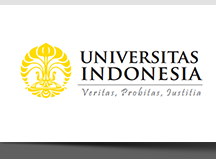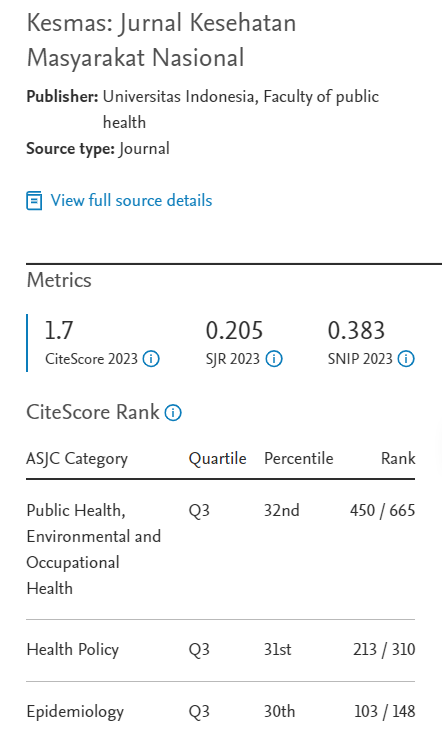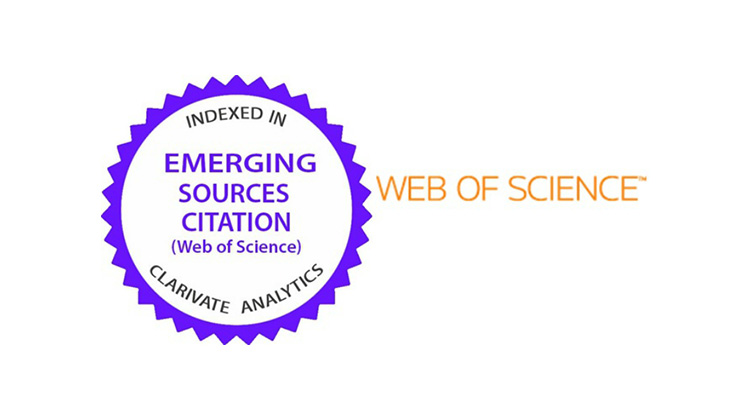Abstract
The problem of undernutrition among children under the age of five (the under-five) continues to be alarmingly high in Indonesia, including in West Sumatra Province. Various factors contribute to this issue, with studies suggesting a relationship between intergenerational causes and undernutrition. This study analyzed the main risk factors of wasting among children in Padang City. Data were collected from 174 under-five and divided into unmatched cases that were selected randomly and control groups. The mothers were interviewed using a questionnaire regarding their children’s feeding habits, and weight and height data were collected from primary health care. Multiple logistic regression analysis was used to calculate the odds ratio for undernutrition. The findings revealed that 37.6% of the under-five were breastfed, whereas over half received inadequate complementary feeding. Poor breastfeeding practices (p-value = <0.001; OR = 8.389; 95% CI 2.611–14.432) and inadequate complementary feeding (p-value = <0.001; OR = 13.534; 95% CI 6.025–30.400) were identified as major contributors to the increased risk of undernutrition in the under-five. The high prevalence of suboptimal under-five feeding practices in the study area highlights the necessity of enhancing maternal nutrition education to ensure optimal growth and nutrition.
References
1. Elmighrabi NF, Fleming CAK, Dhami MV, et al. Childhood undernutrition in North Africa: Systematic review and meta-analysis of observational studies. Glob Health Action. 2023; 16 (1): 2240158. DOI: 10.1080/16549716.2023.2240158.
2. Badan Kebijakan Pembangunan Kesehatan. Buku Saku Hasil Survei Status Gizi Indonesia (SSGI) 2022. Jakarta: Kementerian Kesehatan Republik Indonesia; 2023.
3. Badan Kebijakan Pembangunan Kesehatan. Survei Kesehatan Indonesia (SKI): 2023 Dalam Angka. Jakarta: Kementerian Kesehatan Republik Indonesia; 2024.
4. World Health Organization. Malnutrition in children. Geneva: World Health Organization.
5. World Health Organization, United Nations Children’s Fund. Protecting, promoting and supporting breastfeeding in facilities providing maternity and newborn services: the revised Baby-friendly Hospital Initiative 2018 implementation guidance. Frequently asked questions. Geneva: World Health Organization; 2018.
6. World Health Organization. Fact Sheets-Malnutrition. Geneva: World Health Organization; 2024.
7. World Health Organization. Essential nutrition actions: Improving maternal, newborn, infant and young child health and nutrition. Geneva: World Health Organization; 2013.
8. World Health Organization. Malnutrition. Geneva: World Health Organization.
9. Sinha RK, Dua R, Bijalwan V, et al. Determinants of stunting, wasting, and underweight in five high-burden pockets of four Indian states. Indian J Community Med. 2018; 43 (4): 279-283. DOI: 10.4103/ijcm.IJCM_151_18.
10. Ibrahim C, Bookari K, Sacre Y, et al. Breastfeeding practices, infant formula use, complementary feeding and childhood malnutrition: An updated overview of the eastern mediterranean landscape. Nutrients. 2022; 14 (19): 4201. DOI: 10.3390/nu14194201.
11. Kang Y, Kim J. Risk factors for undernutrition among children 0–59 months of age in Myanmar. Matern Child Nutr. 2019; 15 (4): e12821. DOI: 10.1111/mcn.12821.
12. Boah M, Azupogo F, Amporfro DA, et al. The epidemiology of undernutrition and its determinants in children under five years in Ghana. PLoS One. 2019; 14 (7): e0219665. DOI: 10.1371/journal.pone.0219665.
13. Simanjuntak BY, Haya M, Suryani D, et al. Early inititation of breastfeeding and vitamin a supplementation with nutritional status of children aged 6-59 months. Kesmas. 2018; 12 (3): 107–113. DOI: 10.21109/kesmas.v12i3.1747.
14. World Health Organization. Comprehensive implementation plan on maternal, infant and young child nutrition. Geneva: World Health Organization; 2014.
15. Anato A. Predictors of wasting among children under-five years in largely food insecure area of north Wollo, Ethiopia: A cross-sectional study. J Nutr Sci. 2022; 11: e8. DOI: 10.1017/jns.2022.8.
16. Basri H, Hadju V. Breastfeeding and complementary food on nutritional status infants in Indonesia. Enferm Clin. 2020; 30 (Suppl. 4): 191–195. DOI: 10.1016/j.enfcli.2019.10.067.
17. Sirkka O, Abrahamse-Berkeveld M, van der Beek EM. Complementary feeding practices among young children in China, India, and Indonesia: A narrative review. Curr Dev Nutr. 2022; 6 (6): nzac092. DOI: 10.1093/cdn/nzac092.
18. Putri TA, Dewi YLR, Murti B. Meta-analysis the effects of non exclusive breastfeeding and inappropriate complementary feeding on stunting in children under five. J Mater Child Health. 2020; 05 (05): 514–524. DOI: 0.26911/thejmch.2020.05.05.06.
19. Kusumawardani DA, Luthfiyana NU. Child feeding practices and stunting: A case-control study in Jember regency of Indonesia. Indian J Public Health Res Dev. 2020; 11 (6): 229–234. DOI: 10.37506/ijphrd.v11i6.9774.
20. Dabar D, Yadav V, Goel AD, et al. Risk factors for undernutrition in under-five children living in a migrant populated area of South Delhi. J Family Med Prim Care. 2020; 9 (4): 2022. DOI: 10.4103/jfmpc.jfmpc_1185_19.
21. Luzingu JK, Stroupe N, Alaofe H, et al. Risk factors associated with under-five stunting, wasting, and underweight in four provinces of the Democratic Republic of Congo: Analysis of the ASSP project baseline data. BMC Public Health. 2022; 22: 2422. DOI: 10.1186/s12889-022-14842-x.
22. Suratri MAL, Putro G, Rachmat B, et al. Risk factors for stunting among children under five years in the province of East Nusa Tenggara (NTT), Indonesia. Int J Environ Res Public Health. 2023; 20 (2): 1640. DOI: 10.3390/ijerph20021640.
23. Salleh R, Ahmad MH, Man CS, et al. Risk factors associated with underweight children under the age of five in Putrajaya, Malaysia: A case-control study. J Gizi Pangan. 2023; 18 (2): 89–98. DOI: 10.25182/jgp.2023.18.2.89-98.
24. Menteri Kesehatan Republik Indonesia. Peraturan Menteri Kesehatan Republik Indonesia Nomor 2 Tahun 2020 Tentang Standar Antropometri Anak. Jakarta: Kementerian Kesehatan Republik Indonesia; 2020.
25. Ferreira H da S. Anthropometric assessment of children’s nutritional status: A new approach based on an adaptation of Waterlow’s classification. BMC Pediatr. 2020; 20: 65. DOI: 10.1186/s12887-020-1940-6.
26. Azrimaidaliza, Syarif L, Resmiati. The Association of Income, Infectious Disease and Feeding Patterns with Undernutrition among Children Under Five. 2022; 6 (1SP): 259–265. DOI: 10.20473/amnt.v6i1SP.2022.259-265.
27. Jokhu LA, Syauqy A. Determinants of concurrent wasting and stunting among children 6 to 23 mo in Indonesia. Nutrition. 2024; 122: 112390. DOI: 10.1016/j.nut.2024.112390. study.
28. Fekadu Y, Mesfin A, Haile D, et al. Factors associated with nutritional status of infants and young children in Somali Region, Ethiopia: A crosssectional BMC DOI: 10.1186/s12889-015-2190-7. Public Health. 2015; 15: 846.
29. Ahmad S, Mishra S. Impact of feeding practices on nutritional status of preschool children of Lucknow district: A community based crosssectional study. Clin Epidemiol Glob Health. 2022; 15: 101011. DOI: 10.1016/j.cegh.2022.101011.
30. Kambale RM, Ngaboyeka GA, Kasengi JB, et al. Infant and young child feeding practices and nutritional status in two Health Zones of South Kivu, Eastern Democratic Republic of Congo: A community-based study [Preprint]. Research Square; 2020. DOI: 10.21203/rs.3.rs-25742/v1.
31. Walters CN, Rakotomanana H, Komakech JJ, et al. Maternal determinants of optimal breastfeeding and complementary feeding and their association with child undernutrition in Malawi (2015–2016). BMC Public Health. 2019; 19: 1503. DOI: 10.1186/s12889-019-7877-8.
32. Masuke R, Msuya SE, Mahande JM, et al. Effect of inappropriate complementary feeding practices on the nutritional status of children aged 6-24 months in urban Moshi, Northern Tanzania: Cohort study. PLoS One. 2021; 16 (5): e0250562. DOI: 10.1371/journal.pone.0250562.
33. Palupi IR, Susetyowati MR, Faza F. Feeding practices and nutritional status among children under five years of age in Sleman district, Yogyakarta, Indonesia. Pakistan J Nutr. 2019; 18 (9): 888–894. DOI: 10.3923/pjn.2019.888.894.
34. Olivina H, Fauziah M, Permatasari TAE, et al. Analisis pola makanan tambahan sebagai faktor risiko stunting pada balita di Puskesmas Pasar Prabumulih. Antigen J Kesehat Masy Ilmu Gizi. 2024; 2 (3): 230–243. DOI: 10.57213/antigen.v2i3.384.
35. Abie BM, Goshu YA. Early initiation of breastfeeding and colostrum feeding among mothers of children aged less than 24 months in Debre Tabor, northwest Ethiopia: A cross-sectional study. BMC Res Notes. 2019; 12: 65. DOI: 10.1186/s13104-019-4094-6.
36. Gayatri M. Exclusive breastfeeding practice in Indonesia: A population-based study. Korean J Fam Med. 2021; 42 (5): 395-402. DOI: 10.4082/kjfm.20.0131.
37. Scott JA. The first 1000 days: A critical period of nutritional opportunity and vulnerability. Nutr Diet. 2020; 77 (3): 295–297. DOI: 10.1111/1747-0080.12617.
38. Likhar A, Patil MS. Importance of maternal nutrition in the first 1,000 days of life and its effects on child development: A narrative review. Cureus. 2022; 14 (10): e30083. DOI: 10.7759/cureus.30083.
39. Fau Y, Painem P, Purba EM, et al. The relationship between mother’s knowledge and attitudes and giving early complementary breastfeeding at UPTD Boronadu Health Center South Nias Regency in 2022. J Eduhealth. 2022; 13 (02): 919–925.
40. Tang Y, Liu Y, Xu L, et al. Validity and reproducibility of a revised semiquantitative food frequency questionnaire (SQFFQ) for women of agegroup 12-44 years in Chengdu. J Health Popul Nutr. 2015; 33 (1): 50–59.
Recommended Citation
Azrimaidaliza A , Apriliani AD , Kusuma MP ,
et al.
Assessing the Impact of the First Feeding Practice on Wasting Risk Among Indonesian Children Under the Age of Five.
Kesmas.
2025;
20(2):
112-118
DOI: 10.7454/kesmas.v20i2.2077
Available at:
https://scholarhub.ui.ac.id/kesmas/vol20/iss2/4








